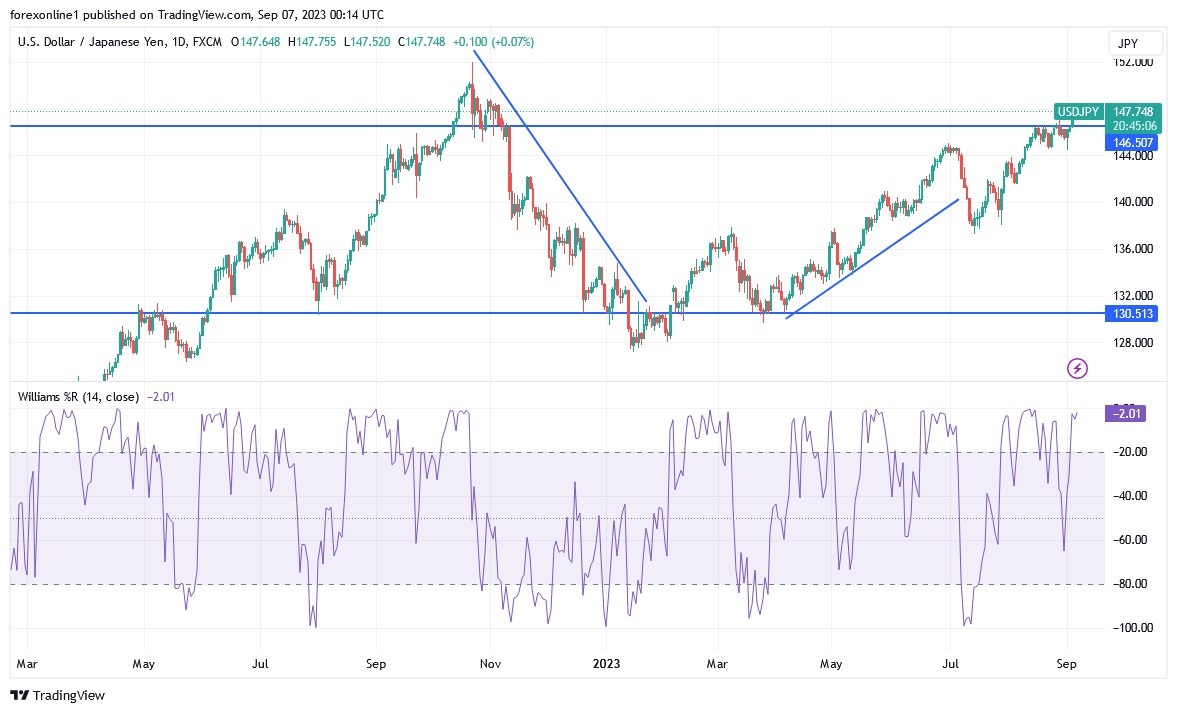During trades this week the selling of the Japanese yen continued as the rising US dollar index (DXY) gained strength. Accordingly, the exchange rate of the US dollar against the Japanese yen USD/JPY rose to its highest level at 147.82, which is the highest level since November of last year. Similarly, GBP/JPY and EUR/JPY rose to 185 and 158 respectively.
Top Forex Brokers
The Japanese Yen has seen significant selling even after the Bank of Japan changed its tone a few months ago. The bank decided to modify the policy of the yield curve, which led to the raising of the yield for 10 years to 0.65%. The main catalyst for the rise of the US dollar/Japanese yen is the strength of the dollar. Where the US dollar index, which measures the currency against a basket of currencies, rose to $104.5, which is the highest level in more than five months.
This rise happened because of the rise in income in the United States and the strength of the economy. Most investors, including foreigners, are now turning to safe major American assets such as stocks.
There's also a general shift to cash since US MMFs jumped to more than 5%. As a result, the money supply declines as the Federal Reserve Bank intensifies its quantitative easing policies. It is unclear whether there is a viable solution to the weak Japanese yen. In the ideal situation, the Bank of Japan might respond by raising interest rates. While inflation is at a high level, analysts believe that the bank will not raise interest rates this year.
The USD/JPY currency pair also rose after the relatively weak household spending data. The numbers published this week revealed that consumer spending decreased by 2.7% in July and by 5% on an annual basis. The tightening of policies in such an environment will slow down the recovery. Therefore, the Japanese yen is likely to continue to decline in the coming months as investors focus on the actions taken by the Federal Reserve Bank and the Bank of Japan.
The interest in buying the US dollar has increased, perhaps with growing concerns about the performance of the Chinese economy after the release of the disappointing Caixin Purchasing Managers' Index for services, which led to the flight to safety. The currencies that were hit the hardest than the US dollar were the Australian dollar and the New Zealand dollar, as both Australia and New Zealand enjoy strong trade relations with the second largest economy in the world.
However, the Japanese Yen was not far behind as yield differentials continued to haunt it. With U.S. Treasury yields rising and the Bank of Japan maintaining yields on Japanese government bonds, the gap continues to widen, pushing the dollar higher against the yen.
Expectations of the US dollar against the Japanese yen today:
- The daily chart shows that the USD/JPY exchange rate has been in a strong uptrend for a while.
- The pair managed to turn the important resistance level at 145 (30 June high) into a support level.
- Furthermore, USD/JPY rose above the 25-day and 50-day Asian moving averages (EMA).
- It is also located just below the upper side of the ascending channel.
- The price is also above the Ichimoku cloud while the MACD indicator is moving above the neutral point.
It is therefore likely that the pair will continue to rise as buyers target the next key resistance level at 151.96 (October 22 high). The alternative scenario is for the pair to retest the downside of the ascending channel at 140.
Ready to trade our Forex daily forecast? We’ve shortlisted the best currency trading platforms in the industry for you.

